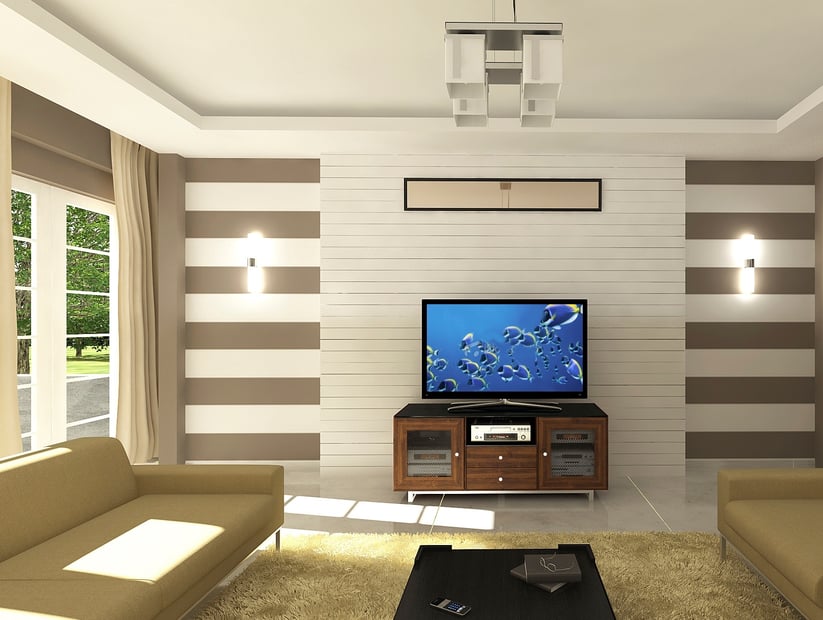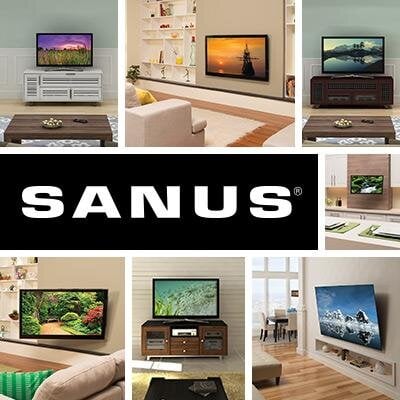
While it may look effortless, designing a media room that has both the performance and aesthetics you desire isn't as simple as plopping a bunch of gear into a room and hitting play. It's a little more complex than that. The good news is that we're here to help! The idiosyncrasies of audio and video, room peculiarities, and cumbersome equipment conspire against you, presenting design challenges that, with a little savvy and perhaps a drill, you can easily overcome. If you are just getting started on your own media room or home theater, here are a few design and technical tips to dial in your room of magic.
Just Say 'No' to Wires
Undeniably, the biggest media room blunder of all is exposed wiring, which is especially heinous with flat-panel displays or speakers that are mounted on the wall. Imagine your gorgeous living room wall defiled by black coils creeping down the wall. For best results, wires should be hidden inside the walls, which most likely means you, or your installer, snaking wires from your TV/speakers to the equipment. We love it when builders are thoughtful enough to include an electrical outlet high enough on the wall to power your TV. Better mounts and AV equipment will include some form of cable-management feature to keep all your cabling nice and tidy.
Get the Right Furniture
Without using furniture specifically designed for audio and video components, you're not only running the risk of a media room with tragic feng shui, but potentially damaging your equipment as well. AV furniture has the proper ventilation needed to keep your components from overheating plus the structural reinforcement needed to support heavy gear.
The Room Makes a Difference
Did you know that one of the biggest factors that contribute to whether or not your media system performs well is the room itself? Its shape, the materials that were used for flooring and interior design, and even the colors make a difference. Bright wall colors, for example, tend to reflect light back onto the screen and can wash out the onscreen image, while dark or neutral shades minimize light reflection and screen coloration. Of course, designers take this more seriously in a dedicated home theater than in a multipurpose media room for obvious reasons. After all, who wants to hang out in a black living room? When selecting your surface materials, consider sound performance. Hardwood floors or concrete will reflect sound, making the room sound something like a basketball court. If you choose reflective surfaces, temper them with plush sofas, pillows, drapes, or opt for carpet -- all of which absorb sound. For a dedicated home cinema, acoustic treatments make sense to tame errant acoustics.
Let There Be (the Right Kind of ) Light
Lighting doesn't get enough credit in the world of home design, and the same holds true for home theater. I liken it to the salt of interior design. The psychological effects of the right lighting are invaluable, and it is even more pronounced when you are dealing with dark rooms and light-sensitive equipment. Colored LED lighting adds drama, aisle lighting helps you find your way in a dark room, accent lighting draws the eye where you want it to go, and backlighting can minimize eyestrain during a long movie. Contrarily, uncontrolled ambient light, while cheerful, can wreak havoc on displays, especially projection screens. Consider blackout shades, an antiglare TV, or an ambient-light-rejecting screen for rooms with lots of sunlight. Our suggestion? Mount your TV!
Tweak Your Tech
Last, but certainly not least, it's important that you tweak your audio and video to get the perfect image and audio in the space. Calibrating your image can be as simple as adjusting settings in your picture menu or as complicated as calling in a professional. Likewise, getting audio that sounds appropriate in your particular room can be as simple as using the auto-calibrate feature on your receiver or hiring an acoustician. Whatever your budget or needs dictate, dialing in the audio and video will make a world of difference, especially considering how whacky settings are out of the box.
What do you find most important in a home theatre? Tell us your thoughts below!

